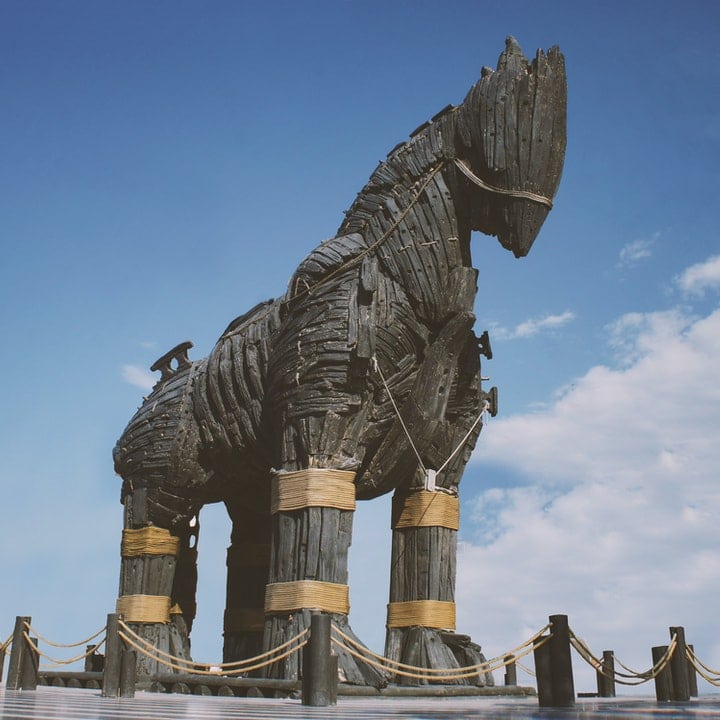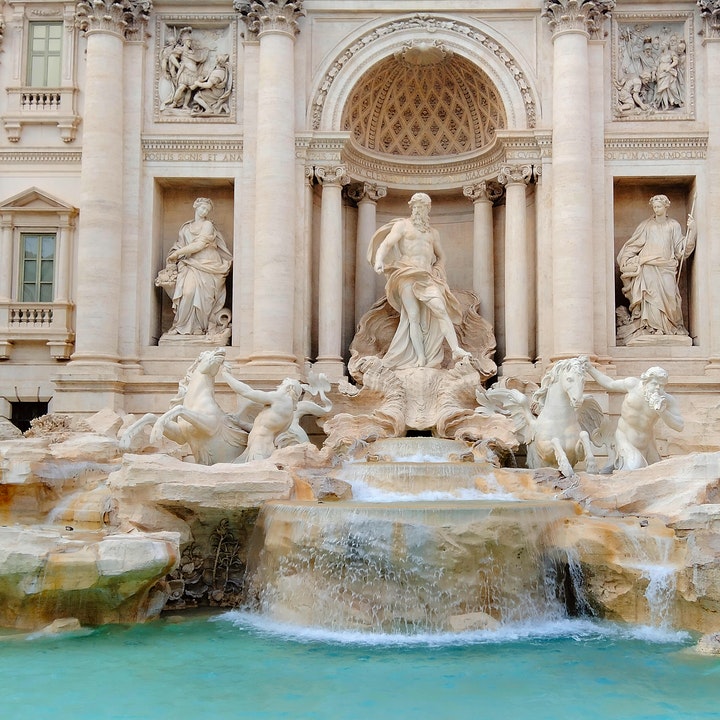
In this great big beautiful world, we tell stories. As you travel the world, whether through books, videos, or in person, you’ll find many places that have their own set of myths, legends, and superstitions.
According to Merriam-Webster’s, a myth is a usually traditional story of ostensibly historical events that serves to unfold part of the world view of a people or explain a practice, belief, or natural phenomenon. A legend is a story coming down from the past. A superstition is a belief or practice resulting from ignorance, fear of the unknown, trust in magic or chance, or a false conception of causation.
Here are 22 myths, legends, and superstitions from around the world.
Superstition: Throw a penny in the Trevi fountain, and you will return to the Eternal City.

Have you visited Rome? One of our must-see sights in this city is the Trevi Fountain, which dates back to the 1730s, and is one of the most popular fountains in the world.
Throw a penny in and the legend is that you will return to Rome one day, that’s why it’s on our list of superstitions from around the world.
Legend: Loch Ness Monster
In August 1933, the Courier (of Scotland) published an account of George Spicer’s alleged sighting of the Loch Ness Monster, who is now affectionately known as Nessie.
The creature hailing from Scottish folklore is often described as large, long-necked, and with one or more humps protruding from the water. However, scientists claim the alleged sightings and photographs are hoaxes and misidentifications of mundane things in the water.
Myth: The Great Flood
There are many stories that are similar to the Great Flood, across many cultures. The most well known story is the Great Flood and the story of Noah’s Ark.
Noah saved humanity by loading all kinds of animals onto his ark, essentially saving them from being destroyed.
Superstition: Throwing salt over your shoulder
Throwing salt over your shoulder is said to help ward off the devil. In Leonardo da Vinci’s painting, The Last Supper, Jesus’ betrayer, Judas Iscariot, accidentally spills salt.
Since Judas was not a good guy, by way of association, that meant that salt was not a good thing. Throwing salt over your shoulder would blind the devil, who was waiting there.
Legend: Kiss the Blarney Stone and you will be granted eloquence.

We wrote an entire article about the Blarney Stone, how cool it is, and why you need to visit it. It is said that if you kiss the Blarney Stone, you will grow eloquent.
Headed to Ireland for the first time? Check out our guide for first timers.
Myth: The Trojan Horse
Our list of myths and legends from around the world wouldn’t be complete without The Trojan Horse. The Trojan Horse is a giant wooden horse that has been said to have aided the Greeks during the Trojan War.
The horse was first mentioned in Homer’s ‘Odyssey.’ THe soldiers hid inside the giant wooden horse and took over the city.
Superstition: “Knock on wood”
There are many interpretations of where the superstition of “knock on wood” started in the world.
Some believe it is rooted in the Indo-European or Celtic belief that spirits good and bad resided in trees and could be either called upon for protection or chased away by knocking on their home, and Christians link the practice to the magical power of the wooden Crucifix.
In addition, a 19th-century British children’s game could be another interpretation – “Tiggy Touchwood” was a game where players claimed immunity from being tagged by touching the nearest piece of wood.
The Brits still say “touch wood,” to this day.
Legend: Fountain of Youth
Next on our list of myths and legends from around the world, is the Fountain of Youth.
According to this legend, Ponce de León believed that a magical fountain, flowing with age-reversing waters, existed in what we know today as St. Augustine, Florida. He forged an entire expedition to search for this fountain, but he never found it.
Myth: The Divine Wind
The Divine Wind is said to have saved Japan from two Mongol fleets in 1274 and 1281.
Essentially, typhoons arose both times and killed thousands of Mongolians, saving the Japanese. Japan celebrates this and claims it was divinely ordained, by the God Raijin in some accounts, and other gods in others.
This intervention is called the kamikaze.
Superstition: Walking under a ladder
The superstition of walking under a ladder causing bad luck stems from European/Christian roots, and Egyptian roots.
The Christians connected ladders to the “Holy Trinity” of the Father, the Son, and the Holy Spirit. The “Holy Trinity” is often seen as a triangle, and a ladder forms a triangle, so walking under a ladder would destroy the sanctity of the Trinity.
In addition, the Egyptians believed one could accidentally see a god while going up or down a ladder, so they avoided them.
Legend: Romulus & Remus
The legend of Romulus and Remus is well known.
The twins were born in 770 BC, tossed into a basket, and left in the Tiber river. A she-wolf found them and raised them until a shepherd took over. As adults, they wanted to establish a city where they met the she-wolf.
They couldn’t decide where, so they fought, and Romulus killed Remus. Rome was born.
Myth: The Vanished Island
Like many myths and legends from around the world, the story of the Vanished Island is not so much a written account, but a story that’s been passed down through the ages by the people of the Solomon Islands of the South Pacific. F
or Teonimanu, the island that disappeared, the story goes: Rapuanate had taken a woman from the island to be his wife, but her brother took her back. So Rapuanate turned to sorcery in revenge – he was given three taro plants, two to plant on Teonimanu, and one to keep.
When new leaves sprouted, that was taken as a sign that the island was about to sink. People fled the island in time.
Superstition: Broken mirror

Next on our list of superstitions from around the world, is the broken mirror.
Mirrors have had negative associations for the longest time, because reflections of ourselves can often be unsettling, especially on bad hair days or with lack of sleep. The ancient Romans are the ones who added the idea to the bad luck of a broken mirror, that it would bring seven years of bad luck.
They contributed to this idea because it was believed that only poor health could cause a mirror to crack, and seven years was required to complete a full life cycle of sickness and renewal.
Legend: Paul Bunyan
The legend of Paul Bunyan circulated in Canada and the US throughout the 1800s, but it was first printed in 1904 in Minnesota’s Duluth News Tribune.
Paul Bunyan is said to have created Arizona’s Grand Canyon, Seattle’s Puget Sound, and the Black Hills of South Dakota and Wyoming.
Myth: Atlantis
Plato, an ancient Greek philosopher, wrote about Atlantis, a civilization founded by people who were half god and half-human.
Their utopia held great naval power. Unfortunately, it is believed that Atlantis was destroyed because of a great natural disaster. Several Greek cities are believed to have been the inspiration for the story.
Superstition: Step on a crack, break your mother’s back
In African and European folklore, “stepping on a crack” was bad luck and could potentially cause harm to a family member.
Cracks in the sidewalk, earth, or anywhere are known to be portals to the supernatural realm, so stepping on them might invite the unwelcome spirits into this world.
Legend: The Chinese Zodiac
The legend of the Chinese zodiac has two tales.
The first tale believes the Jade Emperor was the ruler of Heaven who named each year in the Chinese lunar calendar’s cycle after an animal. She held a race across the Yangtze River to determine which animal would be first.
In the second tale, Ta Nao, a minister of Emperor Huang Ti, assigned an animal to each year of the lunar calendar, but he did so off of the 12 temperaments.
Read this: Different Meanings of Colors Around the World
Myth: Rama’s Bridge
In the Hindu epic, the Ramayana, Sita, the wife of the god Rama, is kidnapped and taken to the Demon Kingdom on the island of Lanka.
In the story, bears and monkeys help Rama and his brother build a floating bridge between India and Lanka. Rama leads an army of monkey-like men and ends up rescuing Sita.
Scientists have revealed that a 29-kilometer line of limestone shoals that stretches between India and Sri Lanka would have drowned in the last ice age, but it’s possible that people were able to cross the bridge until about 4,500 years ago.
Superstition: The curse of the evil eye
In the Mediterranean, Middle East, and South Asia, it’s a common belief that to achieve too much success invites the anger or envy of the gods, who would smite those individuals with the reversal of their fortune.
As a response to this belief, many people began creating beads with an ‘evil eye,’ or nazar, to help ward off the bad fate.
Legend: The Lizard Man
Like many myths and legends from around the world, the legend of The Lizard Man feels a little out there.
The Aboriginal people of Australia credit the sacred Uluru, a 600 million-year-old sandstone monolith in Australia’s Uluru-Kata Tjuta National Park, to a Lizard Man named Alinga.
Alinga roamed the Earth long before time and was well respected for his boomerang skills. His boomerang always returned, no matter what, except for one fateful day. He found it instead wedged into the ground and was unable to remove it.
After many sandstorms, the boomerang morphed into Australia’s Uluru rock.
Myth: The Adventures of Thor
The Vikings, or Norse Men, lived in Scandinavia and their stories are now known as Norse Mythology.
The adventures of Thor, the Norse god of Thunder and son of Odin, the chief of all gods, are nothing short of exciting (especially when Chris Hemsworth is acting in them). He is known for fighting giants, riding in a chariot pulled by goats, and wielding his hammer.
When he swings his hammer, he creates thunder and lightning.
Superstition: Tucking in thumbs at the cemetery
People in Japan tuck their thumbs in when visiting a cemetery.
The Japanese word for “thumb” and its meaning of “parent finger.” Therefore, tucking in one’s thumbs would protect one’s parents from death when visiting a cemetery.
Now that you’ve seen our list of 22 myths, legends, and superstitions from around the world, what did you think? Leave us a comment below!















2 Responses
I enjoyed reading the different myths, legends and superstitions from around the world. I knew of some myths, but I learned some new ones.
Thanks for reading, Genevieve!